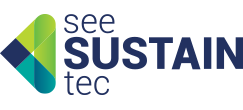 Deloitte recently announced the publication of their second annual reSource study. The project explores perceptions, opportunities, and challenges around energy management of both businesses and consumers. From IDC Energy Insights' perspective, three key points emerged to underscore the importance of market education and end user engagement for the Smart Buildings Market.
Deloitte recently announced the publication of their second annual reSource study. The project explores perceptions, opportunities, and challenges around energy management of both businesses and consumers. From IDC Energy Insights' perspective, three key points emerged to underscore the importance of market education and end user engagement for the Smart Buildings Market.
1. It's an opportune time to approach new customers with Smart Building solutions for energy management:
The new Deloitte study found that "85% of businesses view reducing electricity costs as essential to staying competitive from a financial perspective." This data marks a shift in time and opportunity for investment. Smart Building solutions are particularly well positioned to support the demand for cost management. According to IDC Energy Insights, the cost savings generated by Smart Building solutions is central to the technology applicability and market opportunity. In light of the economic pressures on businesses across the economy, any capital expenditure must overcome substantial hurdle rates and demonstrate rapid payback periods. If successfully implemented, Smart Building technologies provide unparalleled insight into facility operations, streamline maintenance procedures and facilitate transformation of business processes that not only drive energy efficiency improvements, but also support corporate social responsibility, sustainability, and greenhouse gas emission reductions. These benefits will rarely lead investment, but may provide a tipping point when the investment opportunity is assessed. Smart Building solutions represent the most mature energy management solutions commercially available and infuse technology intelligence into building automation and management.
2. Market awareness remains a significant hurdle to technology adoption:
According to Deloitte, "Six-in-ten agree that "smart technology" currently available is not effective for their own unique circumstances and an equal number agree that technology available today is inadequate to help them manage energy costs." Skepticism around technology capabilities and functionality will halt technology adoption. Educating end users on the benefits of technology is a crucial challenge for the industry. This is a reasonable mis-perception on behalf of the building management industry when you look at the heterogeneity of building stock in terms of existing infrastructure, energy demand, and business objectives. Vendors will be required to generate case studies and illustrations of real world implementation across different business segments to accelerate technology deployment. Smart Building solutions promise open platforms, interoperability, integration, and advanced automation capabilities that support solution applicability across building portfolios, but adoption is in the early days and potential end users need to see results and data that can justify investment and prove ROI claims.
3. Smart Buildings REQUIRE Smart Occupants:
reSource 2012 concluded that "Benefits gained from implementing a sophisticated "smart technology" system may well be negated by counterproductive employee behaviors." Fundamentally, Smart Buildings' solutions enable operational and business process change. This two prong impact is a central message end users need to understand and vendors need to showcase. In our primary research it has become clear that Smart Building solutions require both the engagement and commitment of stakeholders across traditionally segmented groups in order to realize the benefits the technologies offer. Building engineers must buy in to the technology capabilities and commit to changes in operations and maintenance procedures, executive management must understand the financial implication of investment and believe in the modeled returns, and tenants whether they be employees, renters, or students must understand the rationale behind the investment leading to process changes that impact their day to day experience in order to overcome the risk of derailing the project. Smart building technologies have the capacity to generate financial, environmental, and strategic business benefits, but without educating the occupants and changing a culture of behavior, investment can be wasted.
The bottom line is that the Smart Buildings market is nascent and the promises intelligent energy management solutions offer will not generate results without stakeholder buy in and commitment. The evolution of a facility with Smart Building technologies cannot take place unless there is an alignment of business goals, operational changes, and occupant awareness and commitment to the motivations for change. IDC Energy Insights' Smart Buildings Maturity Model for End Users is another resource to explore the opportunities and challenges in deploying these new technologies: http://www.idc-ei.com/getdoc.jsp?containerId=EI233133#.UBbl8GFDyZM
http://theenergycollective.com/

 Deloitte recently announced the publication of their second annual reSource study. The project explores perceptions, opportunities, and challenges around energy management of both businesses and consumers. From IDC Energy Insights' perspective, three key points emerged to underscore the importance of market education and end user engagement for the Smart Buildings Market.
Deloitte recently announced the publication of their second annual reSource study. The project explores perceptions, opportunities, and challenges around energy management of both businesses and consumers. From IDC Energy Insights' perspective, three key points emerged to underscore the importance of market education and end user engagement for the Smart Buildings Market.

